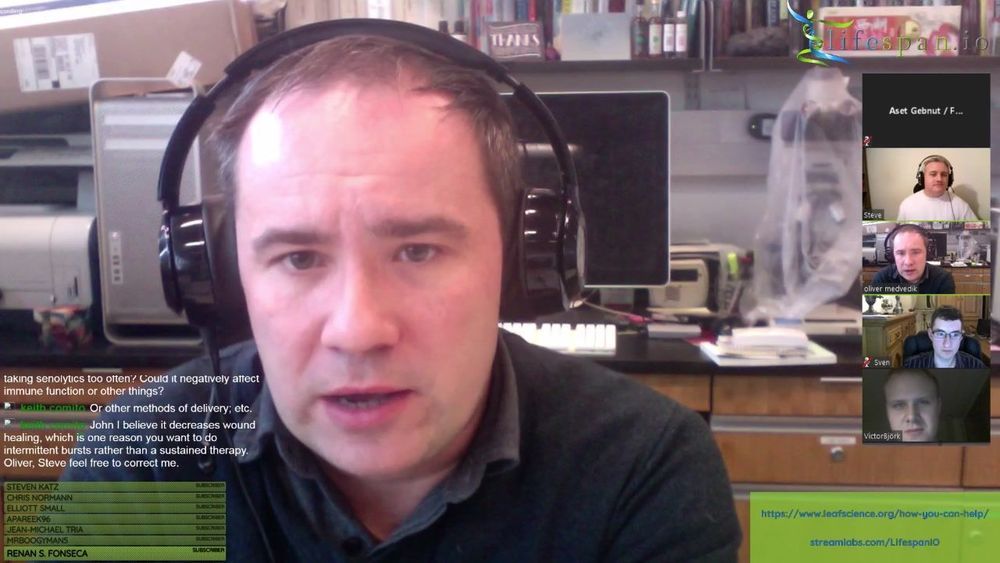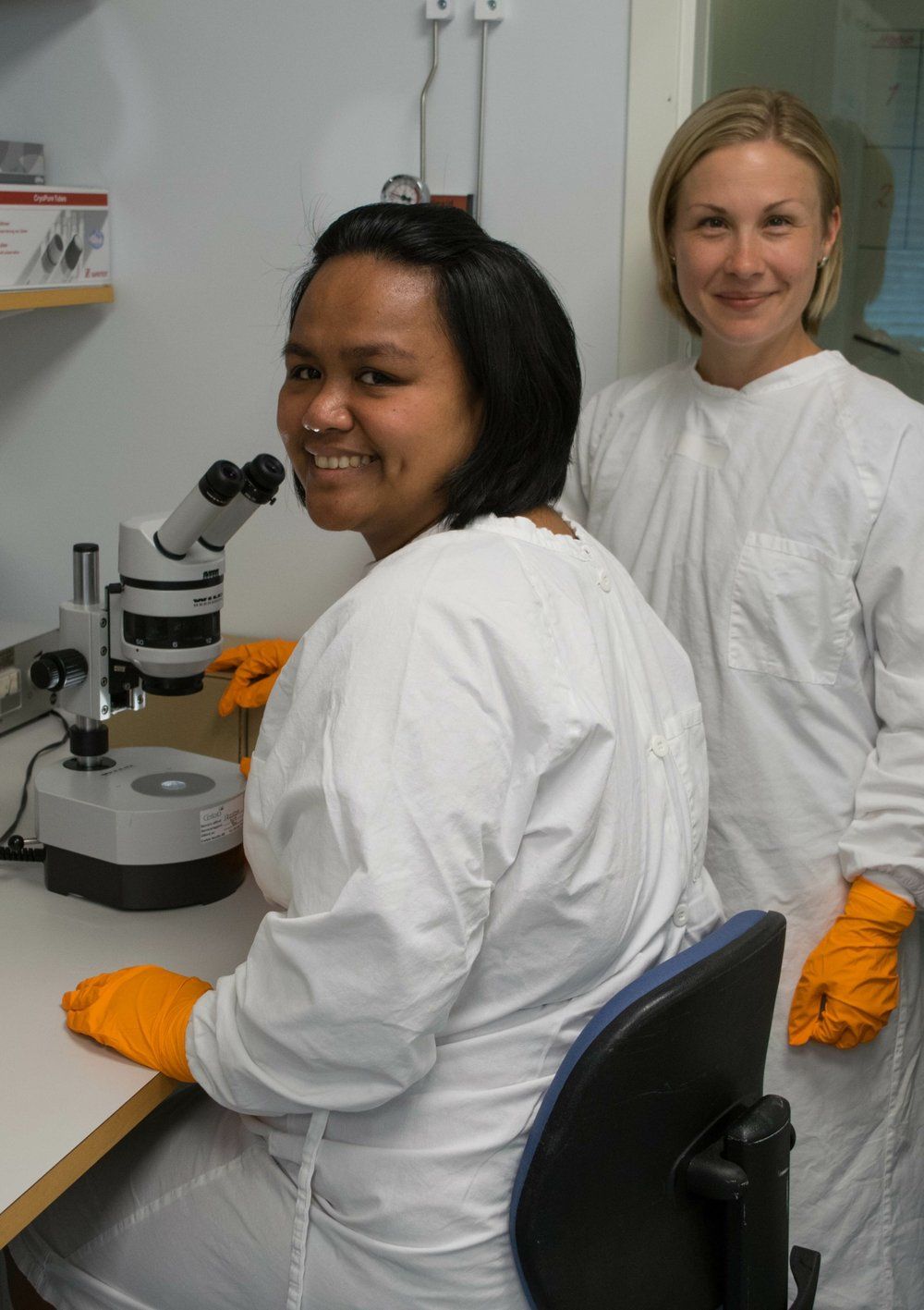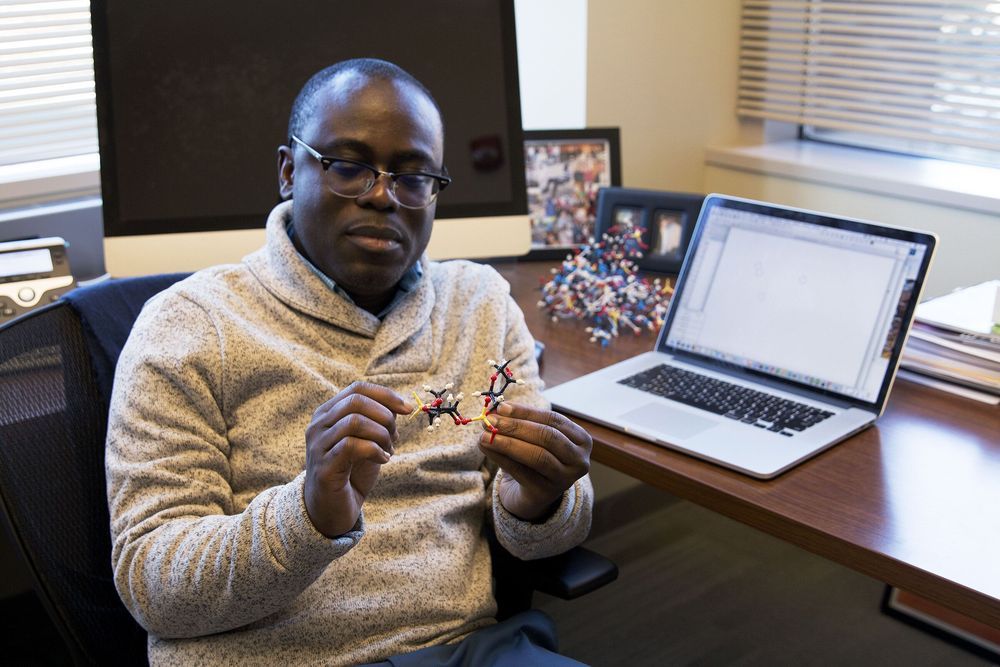Archive for the ‘biotech/medical’ category: Page 2084
Jan 30, 2019
Bendable Needles Developed to Deliver Stem Cells into Brains
Posted by Quinn Sena in categories: biotech/medical, neuroscience
The flexible needles could help doctors deliver stem cells to broader areas of the brain with fewer injections. Such therapies are being investigated for Parkinson’s disease, stroke and other neurodegenerative disorders.
- By Monya Baker, Nature magazine on March 5, 2013
Jan 30, 2019
A New, Reversible Male Birth Control Lasts Months and Looks Like a Cocktail
Posted by Genevieve Klien in category: biotech/medical
Jan 30, 2019
How Long Will We Live in 2069?
Posted by Lilia Lens-Pechakova in categories: biotech/medical, genetics, life extension, neuroscience
A new, very good article on aging, modern aging research and its history, RAAD feest and other initiatives, on model organisms, genetics and future lifespans. “… In early December 2018, just a few months after RAADfest, I visited the Buck Institute for a daylong symposium titled “Live Better Longer: A Celebration of 30 Years of Research on Aging.” That wasn’t an arbitrary demarcation: Aging is one of the rare areas of modern science with a specific launch date. In this case, it was January 1988, when Tom Johnson, a behavioral geneticist at the University of California, Irvine, published a paper that linked a genetic mutation he named “age-1” to longer lifespans in a transparent, microscopic, mostly hermaphroditic roundworm known in scientific circles as C. elegans. Prior to Johnson’s discovery, aging had not received a lot of attention from researchers. In the 1820s, Benjamin Gompertz, a self-trained mathematician, concluded that humans don’t start to break down at some magic age but are constantly declining and losing the ability to repair themselves, a concept now referred to as the Gompertz law of mortality. The first hint that there might be a cellular mechanism underlying the aging process came more than a century later, in the 1930s, when two Cornell scientists discovered that rats kept on calorically restricted diets lived significantly longer than their more satiated brethren. But overall, the field was mostly known as being a haven for charlatans and quacks peddling immortality elixirs and other magical cures — a reputation that continued even after Johnson’s work was published…In 1993, Cynthia Kenyon, an assistant professor at the University of California, San Francisco, discovered that mutations on a different gene, called daf-2, caused C. elegans to live twice as long as expected. Several years later, Gary Ruvkun, a researcher at Harvard Medical School, showed that these so-called worm-aging genes were closely related to genes in the insulin-signaling system of humans. Around the same time, MIT’s Guarente and some of his colleagues discovered the first of several genes in yeast — which are also present in humans — linked to dramatically extended lifespan…” https://medium.com/s/2069/how-long-will-we-live-in-2069-f03e698f6de2
With this promising research on the horizon, how long might humans live in the future? Fantastical claims to longevity have existed since the dawn of recorded time, but reliable data about maximum human lifespan only dates to the mid-1950s, when the Guinness Book of World Records began independently verifying claims. Even then, initially corroborated ages can end up disproven: On December 27, Russian researchers published a paper arguing that the current world record holder, a Frenchwoman named Jeanne Calment, who said she was 122 when she died in 1997, had stolen her mother’s identity and was actually 99 at the time.
Assuming Calment wasn’t a fraud, since 1955, 46 people have made it to age 115. Nine of them have made it to 117 — and only two, Calment and an American woman named Sarah Knauss, have made it past 117. (Knauss died in 1999 at age 119). Over that same time frame, just under 11 billion people have been alive. That means roughly .0000004204133 percent of people have made it to 115. You’re 79,333 times more likely to get hit by lightning than you are to live to 115; 22,455 times more likely to end up in the emergency room from a golf cart accident; and 11,817 times more likely to get murdered.
Jan 30, 2019
For the January Journal Club, we will be taking a look at the recent human senolytics trial conducted at the Mayo Clinic
Posted by Paul Battista in category: biotech/medical

Literature
Justice, J. N., Nambiar, A. M., Tchkonia, T., LeBrasseur, N. K., Pascual, R., Hashmi, S. K., … & Kirkland, J. L. (2019). Senolytics in idiopathic pulmonary fibrosis: Results from a first-in-human, open-label, pilot study. EBioMedicine.
Jan 30, 2019
Industrial chemicals pass from mother to fetus throughout pregnancy
Posted by Xavier Rosseel in categories: biotech/medical, food, neuroscience
In a study published in Environment International researchers at Karolinska Institutet in Sweden show how PFAS industrial chemicals, which are used in many consumer products, pass through the placenta throughout pregnancy to accumulate in fetal tissue. Further research is now needed to ascertain the effect that highly persistent PFAS chemicals have on the fetus.
The PFAS (perfluoroalkyl substances) group comprises thousands of human-made chemicals, which, thanks to their water- and grease-resistant properties, are used in everything from frying pans and food packaging to clothes, cleaning agents and firefighting foams.
“We’ve focused on six of these PFAS substances and found that all appear to the same extent in fetal tissue as in the placenta,” says Richelle Duque Björvang, doctoral student at the Department of Clinical Science, Intervention and Technology, Karolinska Institutet. “So when the baby is born, it already has a build-up of these chemicals in the lungs, liver, brain, and elsewhere in the body.”
Continue reading “Industrial chemicals pass from mother to fetus throughout pregnancy” »
Jan 30, 2019
Israeli Scientists Say They Will Have A Complete Cure For Cancer Within A Year
Posted by Genevieve Klien in categories: biotech/medical, evolution
“We believe we will offer in a year’s time a complete cure for cancer,” said Dan Aridor, chairman of the board of Accelerated Evolution Biotechnologies Ltd. (AEBi).
Jan 30, 2019
15-minute Workouts May Reverse Type 2 Diabetes in Just Six Weeks
Posted by Genevieve Klien in category: biotech/medical
F ifteen-minute workouts could reverse diabetes in just six weeks, new research suggests. A trial of overweight men found that short, intense resistance training sessions three times a week significantly boosted their ability to manage insulin.
Previous research has indicated that 45-minute workouts could have this effect, but the new study has been greeted with particular excitement as experts believe type 2 diabetes patients will be more likely to commit to shorter sessions.
It is estimated that by 2025 there will be five million people with a diabetes diagnosis in the UK, 90 per cent of whom will have type 2, which is related to lifestyle.
Continue reading “15-minute Workouts May Reverse Type 2 Diabetes in Just Six Weeks” »
Jan 30, 2019
Scientists relieved but wary as US shutdown ends
Posted by Derick Lee in categories: biotech/medical, government
The shutdown dragged on two weeks longer than any other in US history, and its effects on science have been profound. It has interrupted studies of everything from California’s coastal fisheries to clinical trials of experimental drugs, and key federal data sets have been pulled offline. Employees at many science agencies were forced to stay at home without pay for more than a month, and academic researchers have been deprived of key research funding.
Federal researchers head back to work after politicians approve deal to reopen government for three weeks. Federal researchers head back to work after politicians approve deal to re-open government for three weeks.
Jan 29, 2019
Drug compound could be next-generation treatment for aggressive form of leukemia
Posted by Paul Battista in category: biotech/medical
Researchers have been struggling for years to find a treatment for patients who have a recurrence of acute myeloid leukemia (AML), an aggressive blood cancer that is one of the most lethal cancers. About 19,520 news cases are diagnosed a year, and about 10,670 people a year die from it, according to the American Cancer Society.
Purdue University researchers are developing a series of drug compounds that have shown promise in treating such cases. About 30 percent of AML patients have a mutation caused by a kinase called FLT3, which makes the leukemia more aggressive. Inhibitors of FLT3, such as Radapt, approved last year by the U.S. Food and Drug Administration, have shown good initial response to treating leukemia. Gilteritinib, another FLT3 inhibitor, was recently approved toward the end of 2018. But AML patients on FLT3 inhibitor therapy often relapse because of secondary mutations in the FLT3 and existing treatments have not been fully successful in treating those cases.
Researchers on a team led by Herman O. Sintim, the Drug Discovery Professor of Chemistry in Purdue’s Department of Chemistry, say they have developed a series of compounds that work not only on AML with common FLT3 mutation, but also drug-resistant AML harboring problematic mutations, such as the gatekeeper F691L mutation, which some leukemia patients who relapse harbor.

















